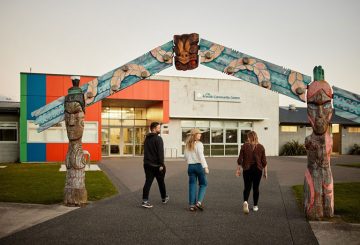ニュージーランド人は今月中にオーストラリアから、そして2週間後には他の国々から帰国できるようになる予定です。ワクチン接種を受けた人は、到着後、各自で隔離された場所に向かう必要があります。
隔離の期間
隔離の期間は、「濃厚接触者」と同じように10日間必要です。
ジャシンダ・アーダーン首相は、これは「旅の途中で感染力の強いオミクロン株に接触する可能性が高い」ためだと述べました。
ニュージーランドのコロナ感染者が増加し、濃厚接触者の隔離要件が変更されれば、隔離期間は7日間に短縮される予定です。
「オミクロン対策の第2段階として、ニュージーランドでの濃厚接触者の隔離期間が短くなれば、帰国者も7日間の隔離で済むようになるでしょう」と彼女は述べています。
隔離中の同居人
新型コロナウイルス対策担当のクリス・ヒプキンス大臣は、前回の国境発表の際に自宅隔離の要件について質問され、他の家人が出入りすることも可能であると述べています。
首相官邸の広報担当者は、現在も同じであり、他の家人は外出や日常生活を送ることができると述べました。
ジャシンダ・アーダーン首相は、ニュージーランドの新たな国境再開の日程を発表しました。
隔離された場所への移動
旅行者は、飛行機での移動も含めて、隔離された場所への国内旅行も可能です。
公共交通機関について尋ねられた際、アーダーン首相は、ニュージーランド人は「到着時に迎えに来てもらう傾向があり、今後もそうなるでしょう」と述べました。
「その時点で、我々はコミュニティの中でオミクロンの感染者が発生することを想定し、日常的に対処していくことになります。」
検査
空港に到着した人には、3種類の迅速抗原検査が配られ、自宅に持ち帰ることができます。
これらは、0日目、5日目、6日目に使用する必要があり、もう1つは予備用です。
「いずれかの時点で陽性反応が出た場合、帰国者は地域の検査所でフォローアップのPCR検査を受けるよう求められます」とアーダーン首相は述べています。「この検査は、出現する可能性のある変異体を監視するのに役立ちます。また、いつ自己隔離を解除しても安全かどうかを判断するのにも有効です。」
ルール違反
自主隔離の要件を守らなかった場合、4000ドルから最大12000ドルの罰金が科せられる可能性があります。
MIQと自主隔離の未来
ハイリスクかつワクチン未接種の渡航者のみ、MIQ(管理隔離施設)に入ることが義務づけられます。
「つまり、国防軍はMIQから撤退する作業を開始し、一部のホテルは従来の使用に戻り、旅行者の帰還をサポートすることになります」とアーダーン首相は述べました。
アーダン首相は、「自主隔離の必要性と価値」を継続的に監視していくと述べています。
「公衆衛生担当者の強いアドバイスによると、私たちがオミクロンを乗り切るためにはまだMIQが必要ではあるものの、そう遠くない未来に必要でなくなる時が来るだろうとのことです。今は、これまで私たちを支えてくれた公衆衛生のアドバイスに耳を傾け続けなくてはなりません。」




























































